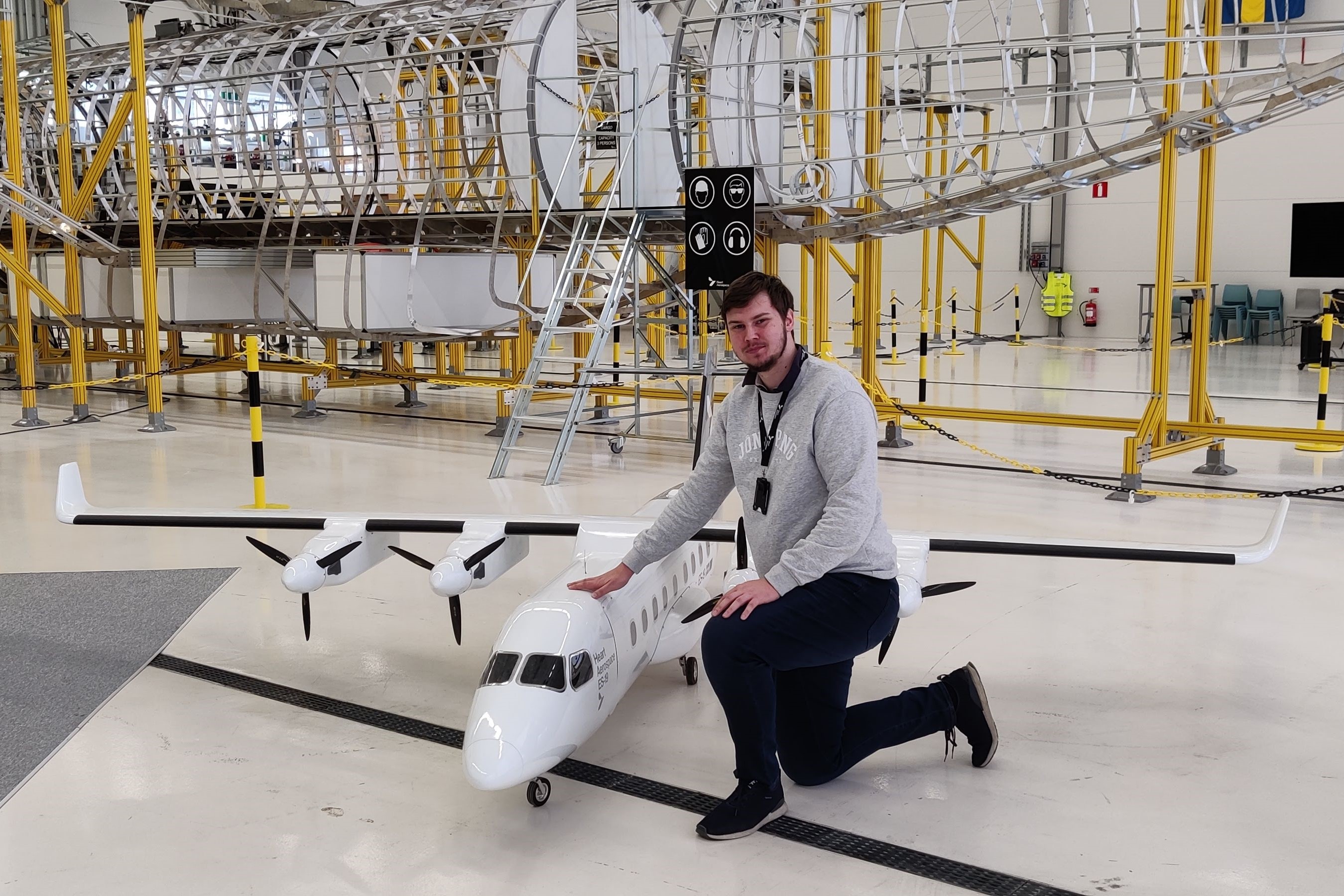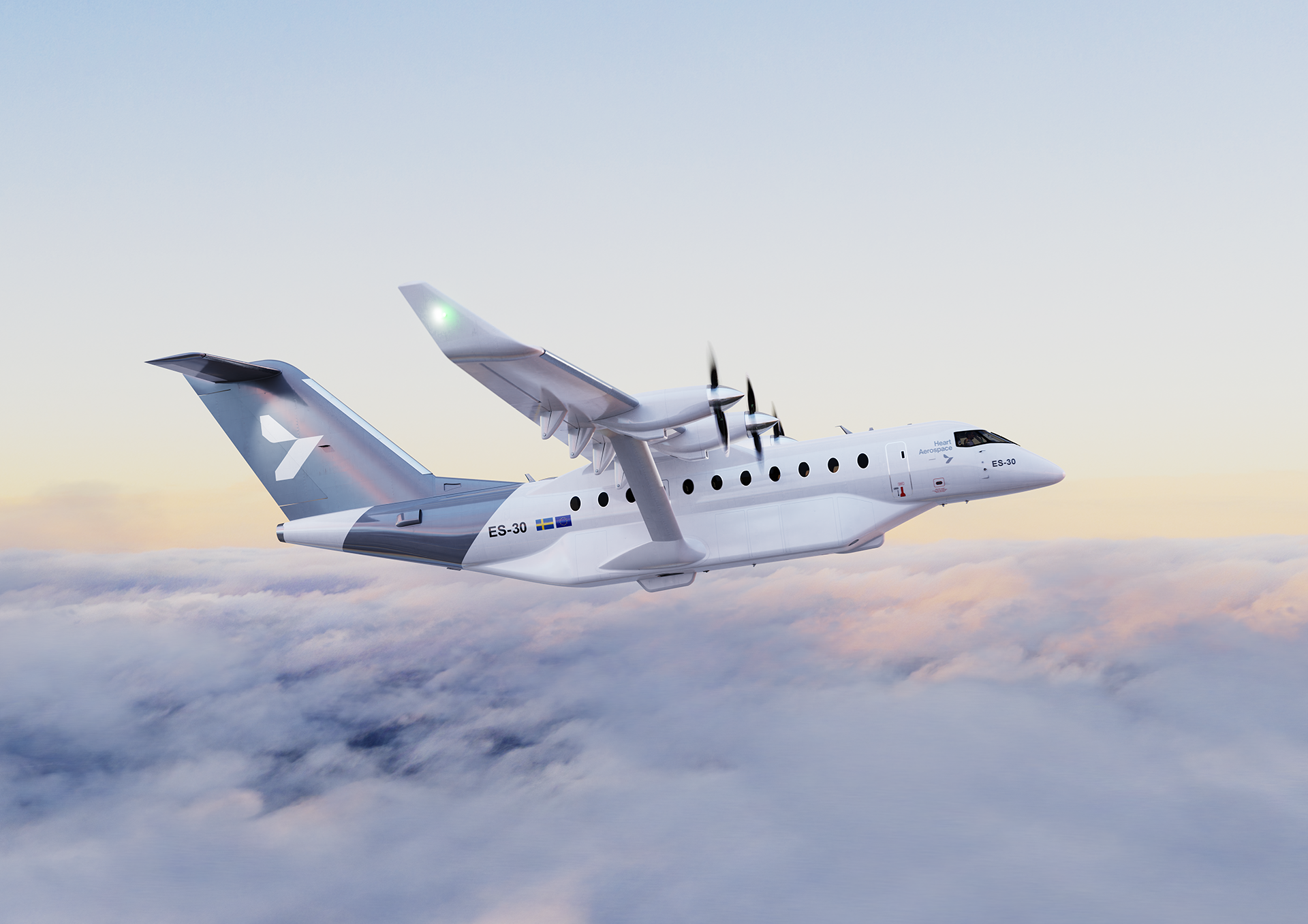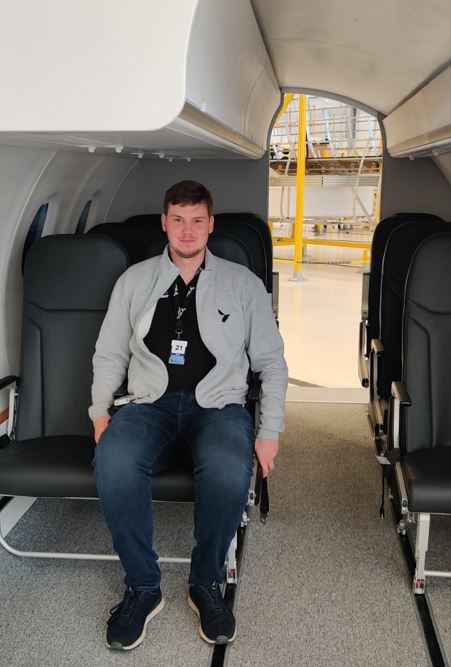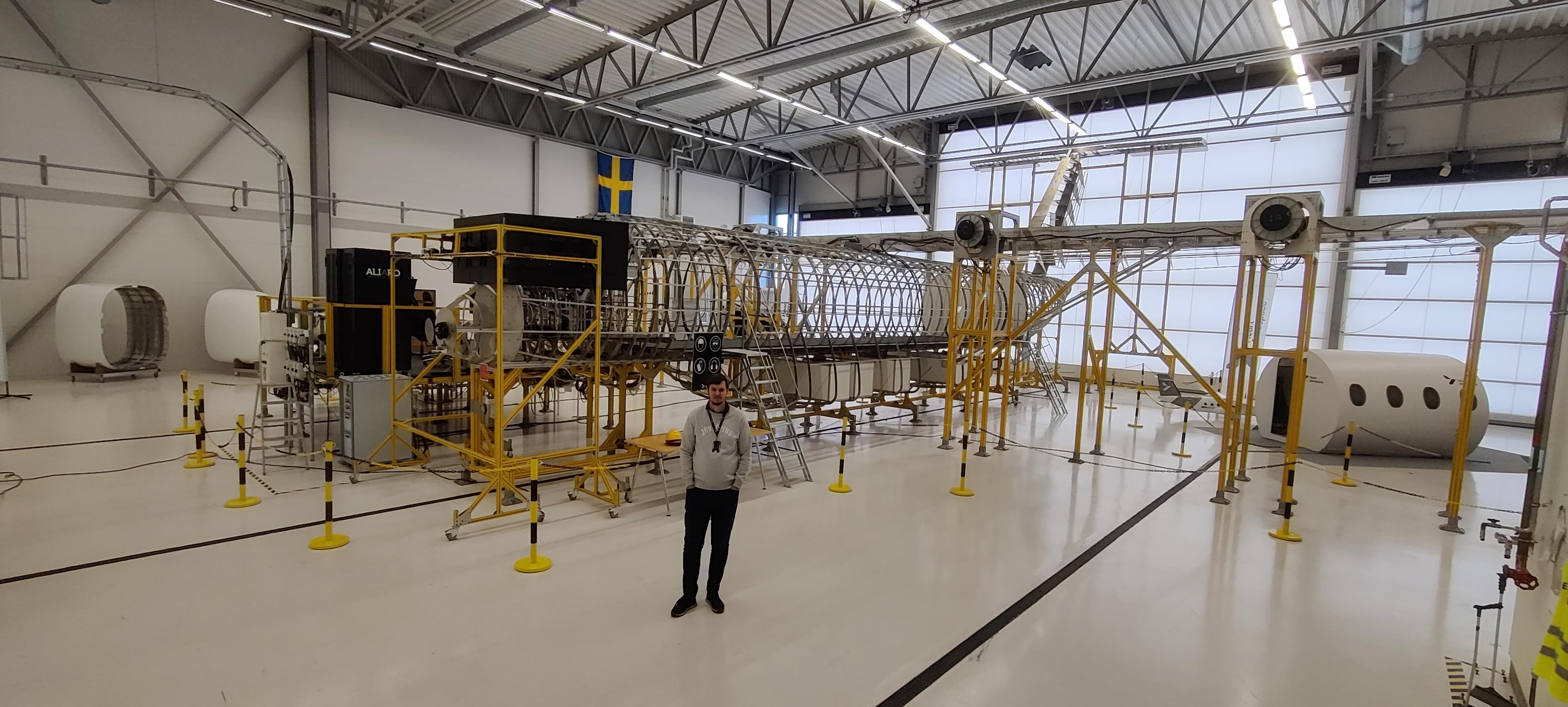He wants to develop solutions that reduce the ecological footprint

The Master of Science in Engineering student Oskar Ogarp has a passion for electric vehicles. This spring, he had an internship at Heart Aerospace, which develops electronic aircraft.
The Master of Science in Engineering student Oskar Ogarp at the School of Engineering (JTH) at Jönköping University (JU), did an internship this spring at Heart Aerospace, which develops one of the world's first commercial electric aircraft.
“It has given me fantastic lessons,” says Oskar Ogarp.
Watch SVT News feature about Heart Aerospace's electric aircraft below.

The aircraft ES-30 is scheduled to enter the market in 2028. Graphics: Heart Aerospace.
Electric air travel will become the new normal for regional flights and could be transformative in meeting the industry's key sustainability challenges, according to Heart Aerospace. They are developing the ES-30 (Electric short take-off and landing) aircraft in a hangar next to Säve Airport in Gothenburg. It is the first commercial electric aircraft in Sweden and one of the first in the world. The aircraft model is powered by electric motors with battery-powered energy and has room for 30 passengers.
Passion for electric vehicles
Oskar Ogarp, who has now studied three years of the five-year Master of Science in Engineering programme Industrial Product Realisation at JTH, has a passion for electric vehicles.
“One of my goals in life is to be involved in developing solutions that can reduce the ecological footprint. In my opinion, what Heart Aerospace and similar companies are doing today will lay the foundation for the mobility of the future,” he says.
Oskar has followed Heart Aerospace for a few years and thinks they are developing a very exciting product. Through the JU Solar Team at Jönköping University, that develops anc races solar-powered cars, he has built up a network of contacts and made friends for life. One of them works at Heart Aerospace, which led to him coming in as a short-term resource at the company for nine weeks.

ES-30 will have room for 30 passengers.
Developed and tested components
For the most part, he worked with development and testing of various components for a full-scale prototype of the aircraft. He says that the staff have shared with him how they work and given him an insight into working life.
“They have given me the opportunity to develop on several levels, for which I am eternally grateful,” he says.
Oskar really enjoyed challenging himself and developing in areas one wouldn’t usually cover in a classroom environment.
40 percent of all flights
The ES-30 is built to meet the demand for environmentally friendly means of transport.
The aircraft is scheduled to enter the market in 2028 and orders for it have already been placed by airlines such as SAS, United Airlines and Canada Air. The ES-30 is a smaller regional plane adapted for shorter flight distances, which corresponds to approximately 40 percent of all flights. It uses propellers instead of jet engines because propellers are considered more efficient when flying at lower speeds and over short distances.
The ES-30 is said to be able to fly 200 kilometers entirely on electricity with today's battery technology but will fly longer distances than that if electric power is combined with renewable aviation fuel.

Oskar Ogarp in the hangar next to Säve Airport where Heart Aerospace develops ES-30.
Watch SVT News feature about the Heart Aerospace ES-30 here


